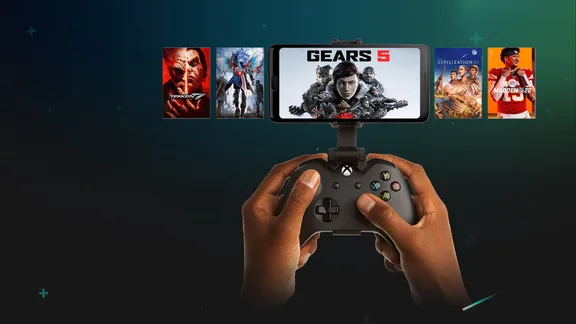The Many Platforms of Microsoft's Xbox
Recently, Microsoft has released more information about their upcoming games and plans for the next generation. The overarching strategy of Microsoft seems to be to make Xbox a service and having Xbox not just anywhere, but everywhere. Examples of this strategy are Halo Infinite, the return of Microsoft Flight Simulator and challenges in bringing xCloud to Apple’s devices.

During Xbox Games Showcase, Microsoft finally announced the next Halo title, Halo Infinite. According to Microsoft, it will be a “platform” which will be used to provide Halo experiences going forward. The details are slim, but so far as a business model, it is a pure games as a service offering as far as I’m concerned. As such, it might have been a mistake from Microsoft to announce that Halo Infinite is a “platform”. Players have already been burned by “GaaS” brought by this generation’s free to play games and to them, platforms are just a buzzword for the next level of nickel and diming and incomplete experiences.
I was probably not alone seeing the parallels between Halo Infinite now and Destiny back in 2014, especially given the ten-year plan[1]. As I’ve written before, making a transformation from a more product-based offering to a service is very difficult and, to me, Destiny epitomizes the rise of service-based games. One big difficulty is that many players don’t feel they need a full-blown service, they were perfectly fine with a product-based offering. It will be interesting how Microsoft and 343 Industries will handle this more ambitious goal. With the announcement of free PvP multiplayer in Halo Infinite, Destiny 2 already gone free to play, and Call of Duty seeing success with its free Warzone Battle Royale mode, the next generation of shooter games is definitely different from the last generation.
To be honest, if everything goes according to the plan, it is conceivable that Halo Infinite is the only Halo title Microsoft needs to release. Technically there is no reason why Microsoft couldn’t package and deliver everything Halo over Halo Infinite and update the game client as needed[2]. However, Microsoft failed to sell the idea to the players and didn’t tell them why this is a good thing[3]. However, due to “market realities”, ie. not everything going to plan, or the customers don’t really get the idea, it is entirely possible that this just the first iteration. Maybe it is Halo Infinite 2 that finally succeeds with a ten-year roadmap. The vision of the future is anyway clear although it might not work out with this installment.
Microsoft Flight Simulator, on the other hand, looks like a true platform. It has modding support, and before launch there are already announced third parties with content (airports and planes) to sell. As a product, this would be a very niche game that would probably mainly monetize through expensive, high quality DLCs like various train simulators or Euro Truck Simulator 2. However, combined with Microsoft’s Xbox Game Pass, Microsoft can bring this game to a much larger audience. Without Xbox Game Pass, it is hard to see why Microsoft would have brought back their longest running franchise[4]. In my opinion, hobby games like MS Flight Simulator are perfect games to offer on a subscription based “Netflix of games”: they might not be the game that drives acquisition, but they for sure are the games that drive retention.
The big difference between Halo Infinite and MS Flight Simulator is that the first one is a narrative driven game with some multiplayer and the other one is a sandbox. Story-driven mainly single player games are difficult to make into services. When Microsoft announced that Halo Infinite is the only Halo title players could look towards this decade, it didn’t send the message Microsoft probably was hoping for: that they are committed to support and expand this title for a long time. Instead, based on their experiences from other games, players were thinking about main story supported by paid DLCs. Depending if they were of the half-empty or half-full persuasion, this either meant the full-price game launched with an “incomplete” story or that or that the inevitable DLCs would add meaningless side quests or tangential stories - and this was all Halo fans could look forward during the next ten years.
Sandboxes[5], on the other hand, are the few genres with huge success with the game as a platform approach: Microsoft’s Minecraft and Roblox. With each update, Fortnite gets closer and closer to a playground and a social network instead of a highly focused competitive shooter.

Microsoft also unveiled their game streaming platform, xCloud, which will be part of the Xbox Games Pass Ultimate package. Like Stadia, it looks like Microsoft’s streaming service won’t be available on Apple’s devices. This isn’t really surprising. Why would Apple allow other platforms on their platform any more than Microsoft would allow PSN or Steam on Xbox? I would be surprised if, for example, Microsoft doesn’t get a cut of EA Access subscriptions on Xbox.
By allowing Stadia or xCloud on their platform, Apple has everything to lose. It can’t just allow few exceptions like these two on their platform, they would need to craft rules that allow them and everyone else who wants to run their own platform on iOS - to the eternal joy of people like Epic Games’ Tim Sweeney. So, the real question isn’t why Apple doesn’t allow Stadia and xCloud on iOS. Why would mobile platforms be any different from console platforms? PC and Android are exceptions[6] and can’t be used as an argument for Apple to open up. Sony’s PlayStation, Microsoft’s Xbox and Apple’s iPhone are all based on vertical integration[7]. Whether their behavior is reasonable and not abusing market power is a different question, but it should not be any surprise that Apple doesn’t want to yield their power to Microsoft and Google[8]. Somehow, that Xbox Game Pass won’t be available on PlayStation or Switch is much more “understandable”[9].
I’m not saying that Apple is in the right, my point is that Microsoft can’t have their cake and eat it too. Should all gaming platforms be as open as the PC has traditionally been, as people like Tim Sweeney argue? Maybe. But why is this discussion laser focused on Apple’s App Store? The answer lies in the fact that although iPhones represent around 20% of smartphone device market share, they still represent around half of the app revenues. And the smartphone market is growing year on year.
As I’ve argued before, streaming has the power to challenge the current oligopolies and this is why everyone and their dog are throwing their hat in the ring. Dismantling the walled gardens of mobile ecosystems for the console and web giants (like Facebook or Amazon) could be very disruptive. Would it be in the players’ interests? Maybe[10]. However, what we are really witnessing is the old gaming giants like Xbox challenging the new gaming giants like Apple. Microsoft’s plan is to have Xbox everywhere and Apple’s ecosystem is the crown jewel[11].
This is after all what MMOs like World of Warcraft, many free-to-play multiplayer games and pretty much all mobile games do - not to forget Destiny 2. Releasing a “new” game, “sequel” or creating any point of a transition would be a risk to lose some of the player base. How Blizzard handles this with Overwatch to Overwatch 2 transition will be interesting. ↩︎
The good things for Microsoft and 343 Industries, on the other hand, are clear. It’s cheaper to not to make the “same” game every year or two just because players expect a new entry in the franchise. The development and marketing machinery required to run EA’s annual sports franchises or Activision’s annual Call of Duty entires must be massive. ↩︎
Technically, Microsoft’s BASIC still lives on in Visual Basic .NET. ↩︎
As the open world RPGs go more and more to the sandbox direction, is it only a question of time until they too will embrace more service and platform aspects? One could argue Fallout 76 was attempting this. ↩︎
It’s notable that on both PC and Android, due to them being more open than iPhone or either PlayStation or Xbox, there is no vertical integration between operating system and device manufacturer. ↩︎
I’m - yet again - not mentioning Nintendo because they do totally their own thing and their vertical integration makes others look like amateurs. ↩︎
And, by extension, to everyone else. ↩︎
Even though that’s what they ultimately would like to do. ↩︎
It would be still an oligopoly run by the largest corporations on Earth, so… ↩︎
Again, not mentioning Nintendo because unless something like the UN forced to Nintendo to let third party developers use their IP like Mario, it probably wouldn’t matter. ↩︎